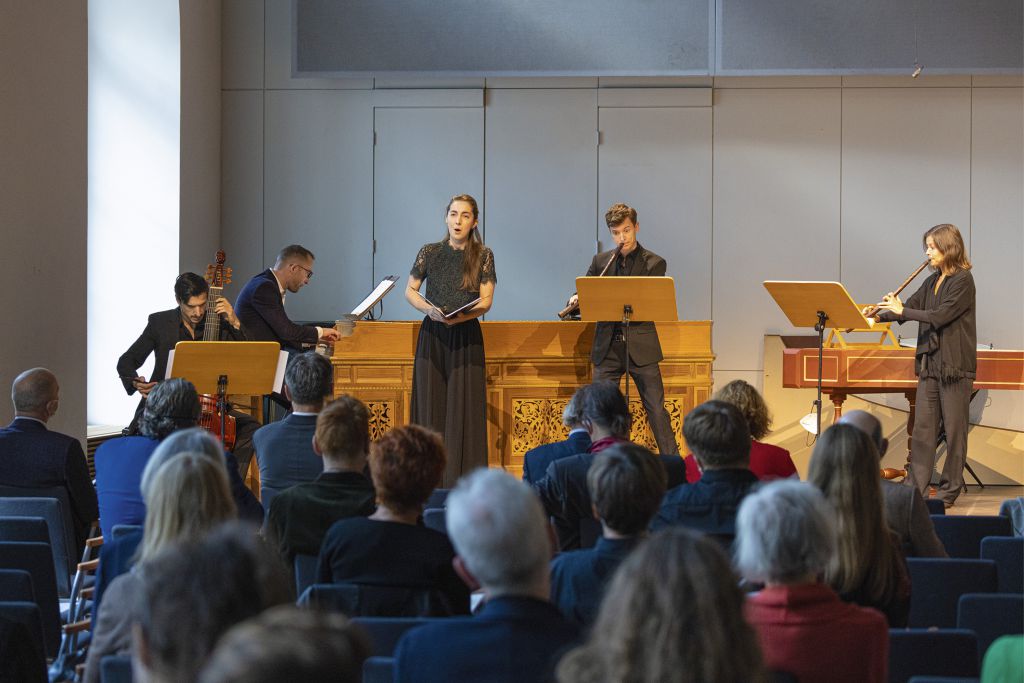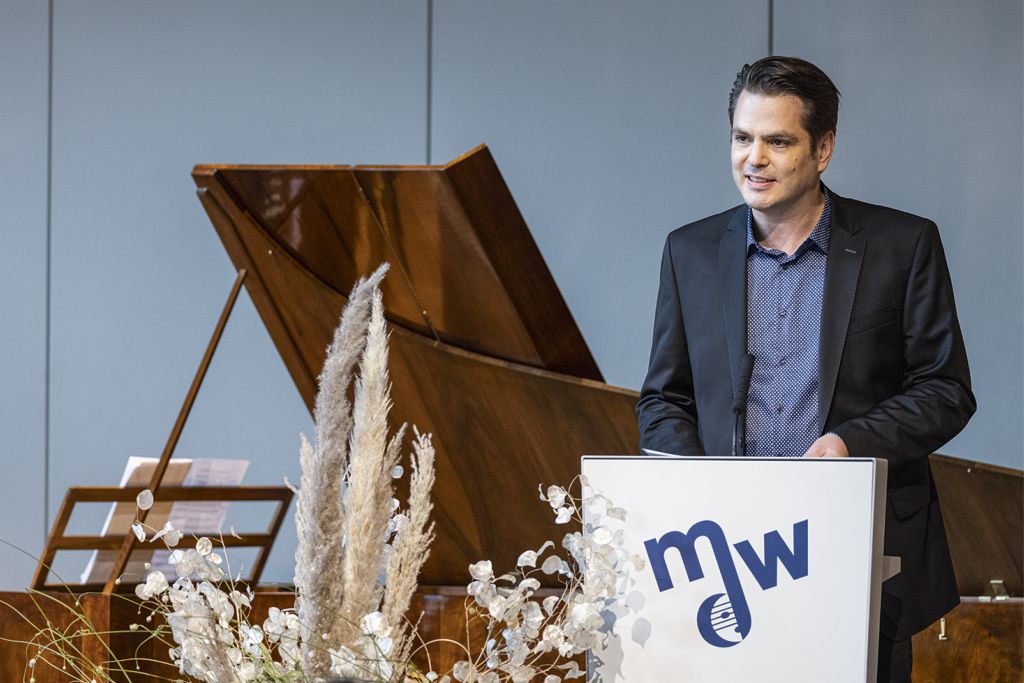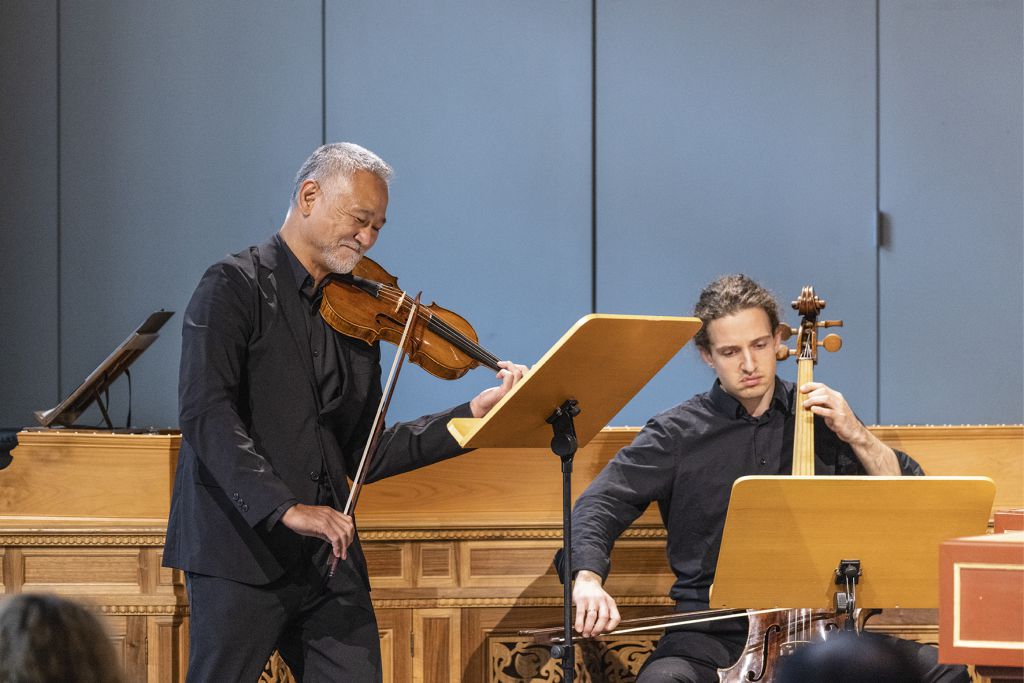The mdw’s Department of Early Music can now look back on an entire year’s worth of activity since its establishment in the autumn of 2020, but it was only just recently that its official opening celebration was able to take place.

The broad musical programming of its inaugural concert was selected to reflect the Department’s main emphases: music at the imperial court in Vienna during the 17th and early 18th century (the so-called Viennese baroque), Viennese classicism, and a general focus on the field of historically informed performance on original instruments. The works performed highlighted the output of individual composers associated with the Viennese imperial court. Ludwig Senfl joined the court chapel of Emperor Maximilian I as a child and was registered in the organisation’s personnel lists as an alto. Ferdinand Tobias Richter received an imperial stipend to study in Rome in 1679. Four years later, he officially entered the Emperor’s service as court organist—in which capacity he also provided instruction in music to several members of the imperial family. He thus became the successor of Alessandro Poglietti, who had served Leopold I as court organist beginning in 1661 but died a tragic death during the second siege of Vienna by the Turks in 1683. Johann Joseph Fux, whose instructional work Gradus ad Parnassum to this day forms the basis for the teaching of counterpoint, was appointed court composer in 1698 and rose to become head of the entire court music establishment in 1715. The life of Franz Schubert was likewise connected with the imperial court: at age 11, he was admitted to the court chapel as a choirboy on account of his beautiful voice. Furthermore, the programmed works included a cantata penned by an unknown composer for Vienna’s Ursuline Convent, formerly housed in the building at Seilerstätte 26 that is now occupied by the mdw. Empress Eleonora II, a native of Italy, encouraged the Ursulines to establish a convent in Vienna and was probably also the driving force behind the Ursuline sisters’ intense exchange with Italian musicians. Among the Ursulines were numerous good singers and instrumentalists whose musical performances at the Church of St. Ursula were praised as “rare and pleasant” by a contemporary1 writing in 1685. On two feast days each year, Saint Ursula’s Day and Holy Saturday, the nuns hosted an imperial visit—and it was for just such a Sabato santo that this Cantata sacra, which now received its first modern performance, was originally composed. With this, the Department of Early Music also signalled its intent to research and publish yet-undiscovered treasures of Viennese musical life.

Performance practice that aims to approach music’s original sound as closely as possible quite naturally entails the use of appropriate instruments, and the Department of Early Music is working hard to ensure maximum availability of such resources to its students. A consort of Renaissance transverse flutes copied from some of the only extant originals, preserved in Verona, brought Ludwig Senfl’s music to new life. An Italian harpsichord modelled after an original by Carlo Grimaldi, a claviorganum2 that unites the registers of harpsichord, organ, and regal, and a Viennese fortepiano built after an original instrument by Rosenberger represent just a small cross-section of a rich palette of diverse historical keyboard instruments. And the festive Viennese baroque works performed in this concert, for their part, featured the cornetti so typical of this repertoire, instruments whose originals have been preserved at Vienna’s Kunsthistorisches Museum.
This inaugural programme was performed by faculty, students, and guests of the Department of Early Music, where the course offerings have already come to encompass a rich spectrum. Alongside the bachelor’s degree programmes in harpsichord and recorder and the master’s degree programme in historically informed performance, the department’s chamber music offerings, specialisations, and workshops include instruction in baroque singing, transverse flute, baroque oboe, historical clarinet instruments, baroque bassoon, historical trombone, natural trumpet, fortepiano, clavichord, baroque violin, baroque cello, viola da gamba, lute, baroque guitar, and baroque dance.

Work in the field of early music can already look back on a certain history in Vienna, a history that we now regard as itself being within the realm of “early music”. Gottfried van Swieten, who was a son of Empress Maria Theresia’s private physician and spent years as a diplomat in Habsburg service before concluding his career as prefect of the Imperial Court Library, was an enthusiastic collector of manuscripts from a bygone era and organised performances of works by Johann Sebastian Bach and Georg Friedrich Handel at Sunday concerts in the State Hall of Vienna’s Imperial Court Library. Wolfgang Amadé Mozart himself performed in Van Swieten’s concerts, thereby becoming acquainted with these old masters. Back then, however, the main interest was in the compositions as such; performance practice was not yet of any concern, a fact testified to by how Mozart arranged and reorchstrated these baroque works in order to clothe them in the sonic trappings of his times. Only in the late 1940s did the curriculum of what was then the Academy of Music and Performing Arts come to include a certain number of offerings focused on researching historical performance practices and investigating historical instruments along with their playing techniques—an initial stage of the growing interest in stylistically appropriate performance that was shaped by personalities such as Josef Mertin and Isolde Ahlgrimm. It is thus that the autumn 2020 establishment of a dedicated Department of Early Music, which will be covering these concerns in the broadest possible manner from the standpoints of both practice and research, surely represents a milestone in the history of the mdw itself.

